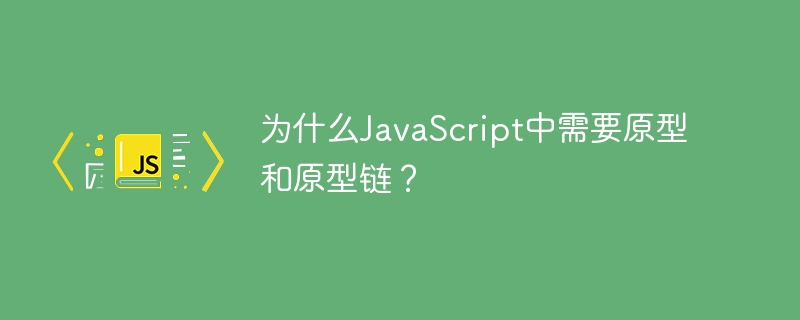

Why are prototypes and prototype chains needed in JavaScript?
In the process of learning JavaScript, we often encounter the concepts of prototype and prototype chain. So, why are prototypes and prototype chains needed in JavaScript? This article will explain this problem through specific code examples.
First, let us understand the prototype in JavaScript. In JavaScript, every object has a prototype object. We can get the prototype of an object through the Object.getPrototypeOf method.
let obj = {};
let proto = Object.getPrototypeOf(obj);
console.log(proto); // 输出: {}In the above code, we create an empty object obj, then obtain its prototype object through the Object.getPrototypeOf method, and finally print it out. Since obj is an empty object, its prototype object is an empty object {}.
Next, let’s take a look at the role of prototypes. In JavaScript, every object has access to properties and methods in its prototype object. If an object accesses a property or method, but the object itself does not have the property or method, JavaScript will automatically look for it in the object's prototype object.
let obj = {};
obj.toString(); // 对象自身没有toString方法,会从原型中查找In the above code, we try to call the toString method of an empty object obj. However, obj does not have a toString method, so JavaScript will look for it in the prototype object of obj. Since the default prototype object of the object is {}, and {} contains the toString method, so obj can eventually be called successfully toString method.
The prototype chain is a mechanism for finding object properties and methods, which is very important in JavaScript. When an object looks for a property or method, if the object itself does not have one, it will look for it in the prototype object. If there is no prototype object, it will continue to search in the prototype's prototype object, and so on, until the property or method is found, or it reaches the top of the prototype chain, that is, null.
The following is an example to demonstrate how the prototype chain works:
let parent = {
name: "John",
sayHello: function() {
console.log("Hello, " + this.name)
}
};
let child = Object.create(parent);
child.name = "Alice";
child.sayHello(); // 输出:Hello, AliceIn the above code, we create an object named parent and set A name attribute and a sayHello method. Then, an object named child is created with parent as the prototype through the Object.create method. Next, we added a name attribute to the child object. Finally, we called the sayHello method of the child object and successfully output Hello, Alice.
In the above example, when the child object calls the sayHello method, the method is not found. However, JavaScript will search in the prototype object of the child object, which is the parent object. The sayHello method was found in the parent object, so it was called successfully.
Through the above introduction and examples, we can see the importance of prototypes and prototype chains. They enable JavaScript to implement prototype-based inheritance and share properties and methods between objects, improving code reusability and efficiency.
To sum up, the reason why prototypes and prototype chains are needed in JavaScript is to achieve inheritance and shared property methods. Through the prototype chain mechanism, JavaScript can share properties and methods between objects, improving code reusability and efficiency.
The above is the detailed content of Why do JavaScript need prototypes and prototype chains?. For more information, please follow other related articles on the PHP Chinese website!




